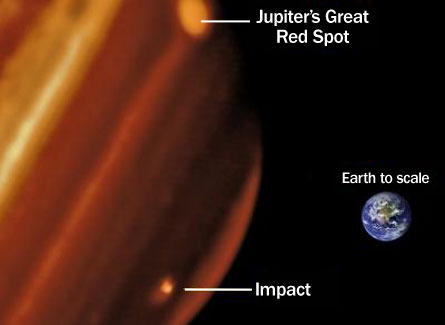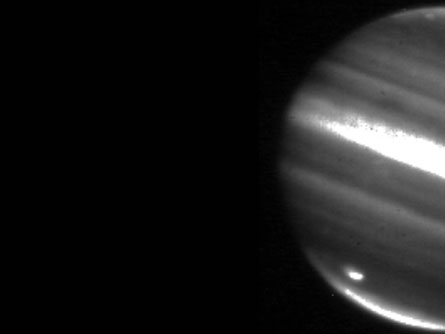Jupiter has taken another hit.
A new scar in Jupiter’s upper atmosphere reveals that an object has recently bashed the giant planet’s south polar region. The strike is only the second time in recorded history that a large projectile has been known to strike a giant planet.
The discovery comes 15 years after fragments of Comet Shoemaker-Levy 9 hit Jupiter and created a memorable display of dark spots, waves and plumes.
Amateur and professional astronomers around the globe are now training telescopes on the planet to study the evolution of the new scar and to determine if the projectile is part of a series of fragments that might create an extended spectacle over the next week, notes planetary scientist Hal Weaver of the Johns Hopkins Applied Physics Laboratory in Laurel, Md. The newly refurbished Hubble Space Telescope will soon join the effort, says Matt Mountain, director of the Space Telescope Science Institute in Baltimore, Md.
It’s unclear whether the projectile was a comet or an asteroid, Weaver says, but the size of the scar in Jupiter’s atmosphere suggests the body had a diameter of a few hundred meters, similar to of Shoemaker-Levy 9’s smaller fragments.
Using a small visible-light telescope, amateur astronomer Anthony Wesley of Murrumbateman, Australia, first spotted Jupiter’s new scar on July 19. Glenn Orton of NASA’s Jet Propulsion Laboratory in Pasadena, Calif., and his colleagues, already viewing Jupiter at NASA’s Infrared Telescope Facility atop Hawaii’s Mauna Kea, captured an image on July 20 confirming the scar.
Additional infrared images taken with the Keck II telescope on Mauna Kea reveal a bright spot near Jupiter’s south pole that is about 200 million square kilometers — an area roughly the size of the Pacific Ocean. Frank Marchis of the University of California, Berkeley, described the image in a July 21 International Astronomical Union telegram.









